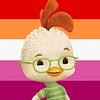Take a photo of a barcode or cover
adventurous
challenging
dark
emotional
funny
hopeful
informative
inspiring
lighthearted
mysterious
reflective
relaxing
sad
medium-paced
Plot or Character Driven:
A mix
Strong character development:
Yes
Loveable characters:
Yes
Diverse cast of characters:
Yes
Flaws of characters a main focus:
No
adventurous
funny
lighthearted
medium-paced
Plot or Character Driven:
Character
Strong character development:
Yes
Loveable characters:
Yes
Diverse cast of characters:
Yes
Flaws of characters a main focus:
Yes
Scatological detail is always most welcome, but in this case didn’t make up for the fact that I struggled to care about whatever was happening
adventurous
dark
medium-paced
Plot or Character Driven:
A mix
Strong character development:
Yes
Loveable characters:
Complicated
Diverse cast of characters:
Complicated
Flaws of characters a main focus:
Yes
A joke on humanity
Jonathan Swift's "Gulliver's Travels" is easily one of the greatest satires every written, on the level of "Don Quixote" and "The Adventures of Huckleberry Finn". I might even go as far as saying that it is BETTER satire than either of those works, as "Gulliver's Travels" primary purpose being to expose the ills of humanity. I say this as I have little knowledge of the society in which Swift resided, but can understand with ease his criticisms of the world as a whole. The Lilliputian's and the Blefuscuian's war mocks political divides and organized religion. Being six inches tall, these warring peoples show how insignificant religion is and how it should have little to no place in government.
The Brobdingnagdians mock English society's opinion of itself with a simple and easy to grasp statement from the king of Brobdingnag stating that he has "never observed a more degenerate race of people" (paraphrase) in reference to the protagonist telling him about England and its customs. This is exemplified by the size of the Brobdingnagdian people in reference to Gulliver (the protagonist), who dwarf him by many stories.
This is only the first half of the book, the other half (which I will not spoil) contains even greater wisdom than the first, and the most I can say is that you need to read it yourself to appreciate the genius and elegance of Swift's prose and mind.
Jonathan Swift's "Gulliver's Travels" is easily one of the greatest satires every written, on the level of "Don Quixote" and "The Adventures of Huckleberry Finn". I might even go as far as saying that it is BETTER satire than either of those works, as "Gulliver's Travels" primary purpose being to expose the ills of humanity. I say this as I have little knowledge of the society in which Swift resided, but can understand with ease his criticisms of the world as a whole. The Lilliputian's and the Blefuscuian's war mocks political divides and organized religion. Being six inches tall, these warring peoples show how insignificant religion is and how it should have little to no place in government.
The Brobdingnagdians mock English society's opinion of itself with a simple and easy to grasp statement from the king of Brobdingnag stating that he has "never observed a more degenerate race of people" (paraphrase) in reference to the protagonist telling him about England and its customs. This is exemplified by the size of the Brobdingnagdian people in reference to Gulliver (the protagonist), who dwarf him by many stories.
This is only the first half of the book, the other half (which I will not spoil) contains even greater wisdom than the first, and the most I can say is that you need to read it yourself to appreciate the genius and elegance of Swift's prose and mind.
adventurous
funny
fast-paced
Plot or Character Driven:
A mix
Strong character development:
N/A
Loveable characters:
Yes
Diverse cast of characters:
Yes
Flaws of characters a main focus:
N/A
I just love the 1996 film so much better.
Gulliver’s Travels reminds me of Le Guin’s Changing Planes. Or rather, considering publication dates, Changing Planes is reminiscent of Gulliver’s Travels. Both novels are travel guides to fantastical, distant lands inhabited by creatures both similar and dissimilar to humans. The narrators detail the societies they encounter as a way to reflect upon their own society in particular and humanity in general.
The biggest differences between the two novels are the level of meta and the continuous story arc Swift achieves in Gulliver’s Travels. Changing Planes does not commit to the same metanarrative technique, nor does it have a strong character or plot that carries through and binds the travels together (which was my primary complaint against Le Guin).
In Gulliver’s Travels, the protagonist of the story is its author, who allows a publisher to produce his tales into distributable form. The publisher prepends an epigraph to each chapter to describe what the author will relate. Frequently the author speaks directly to “the reader,” explaining his perspective, entreating the reader to private information, or foreshadowing what he will tell of later in the book. Thus, Gulliver’s Travels is a book within a book. The only thing that’s missing is Mr. Lemuel Gulliver’s name on the cover.
Unfortunately, this book is yet another case of dull writing defeating compelling content. I enjoyed the story of the novel and greatly appreciated the cohesion between locations—elements which Changing Planes sorely lacked. Swift’s, or Gulliver’s, imagery and breadth of detail entertained clear pictures of the fictitious societies in my imagination. The metanarrative is full of wit, satire, and introspection.
Too bad Gulliver admits that “my principal design was to inform, and not to amuse thee” (p. 312). Gulliver’s narration is dry and boring. As interested as I was in learning about Gulliver’s time in Brobdingnag and the Yahoo people-creatures, I struggled to wade through his words. I can’t blame Swift, though. Originally published in 1726, the novel’s writing style is a product of its time. It’s just one I am not fond of. I’ll have to give Changing Planes another try.
The biggest differences between the two novels are the level of meta and the continuous story arc Swift achieves in Gulliver’s Travels. Changing Planes does not commit to the same metanarrative technique, nor does it have a strong character or plot that carries through and binds the travels together (which was my primary complaint against Le Guin).
In Gulliver’s Travels, the protagonist of the story is its author, who allows a publisher to produce his tales into distributable form. The publisher prepends an epigraph to each chapter to describe what the author will relate. Frequently the author speaks directly to “the reader,” explaining his perspective, entreating the reader to private information, or foreshadowing what he will tell of later in the book. Thus, Gulliver’s Travels is a book within a book. The only thing that’s missing is Mr. Lemuel Gulliver’s name on the cover.
Unfortunately, this book is yet another case of dull writing defeating compelling content. I enjoyed the story of the novel and greatly appreciated the cohesion between locations—elements which Changing Planes sorely lacked. Swift’s, or Gulliver’s, imagery and breadth of detail entertained clear pictures of the fictitious societies in my imagination. The metanarrative is full of wit, satire, and introspection.
Too bad Gulliver admits that “my principal design was to inform, and not to amuse thee” (p. 312). Gulliver’s narration is dry and boring. As interested as I was in learning about Gulliver’s time in Brobdingnag and the Yahoo people-creatures, I struggled to wade through his words. I can’t blame Swift, though. Originally published in 1726, the novel’s writing style is a product of its time. It’s just one I am not fond of. I’ll have to give Changing Planes another try.
Livro bom para crianças, que provavelmente pegou varias historias de marinhaiero da época e transformou em livro.
Legal por ser um classico, mas bem fraquinho.
Legal por ser um classico, mas bem fraquinho.






